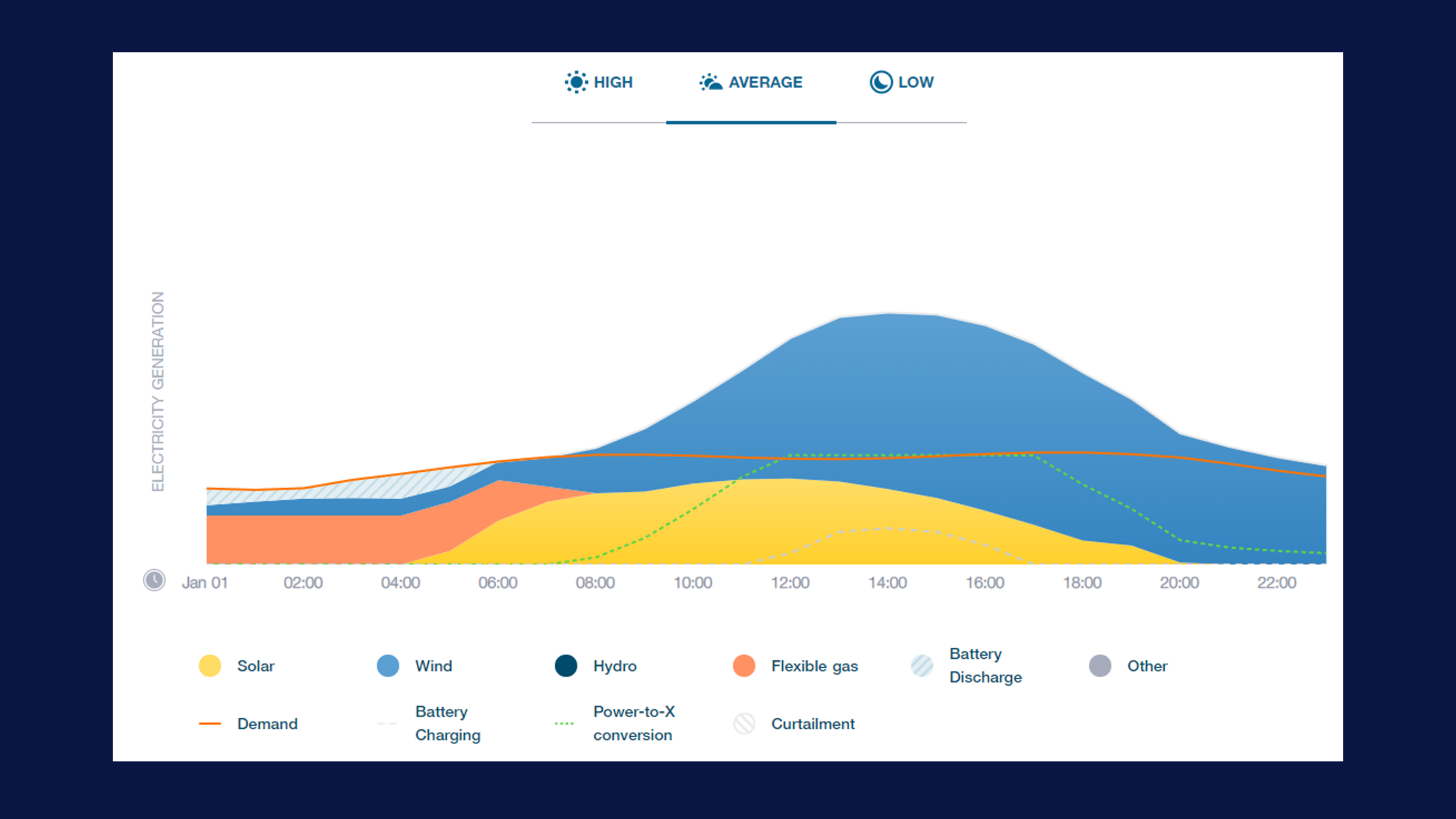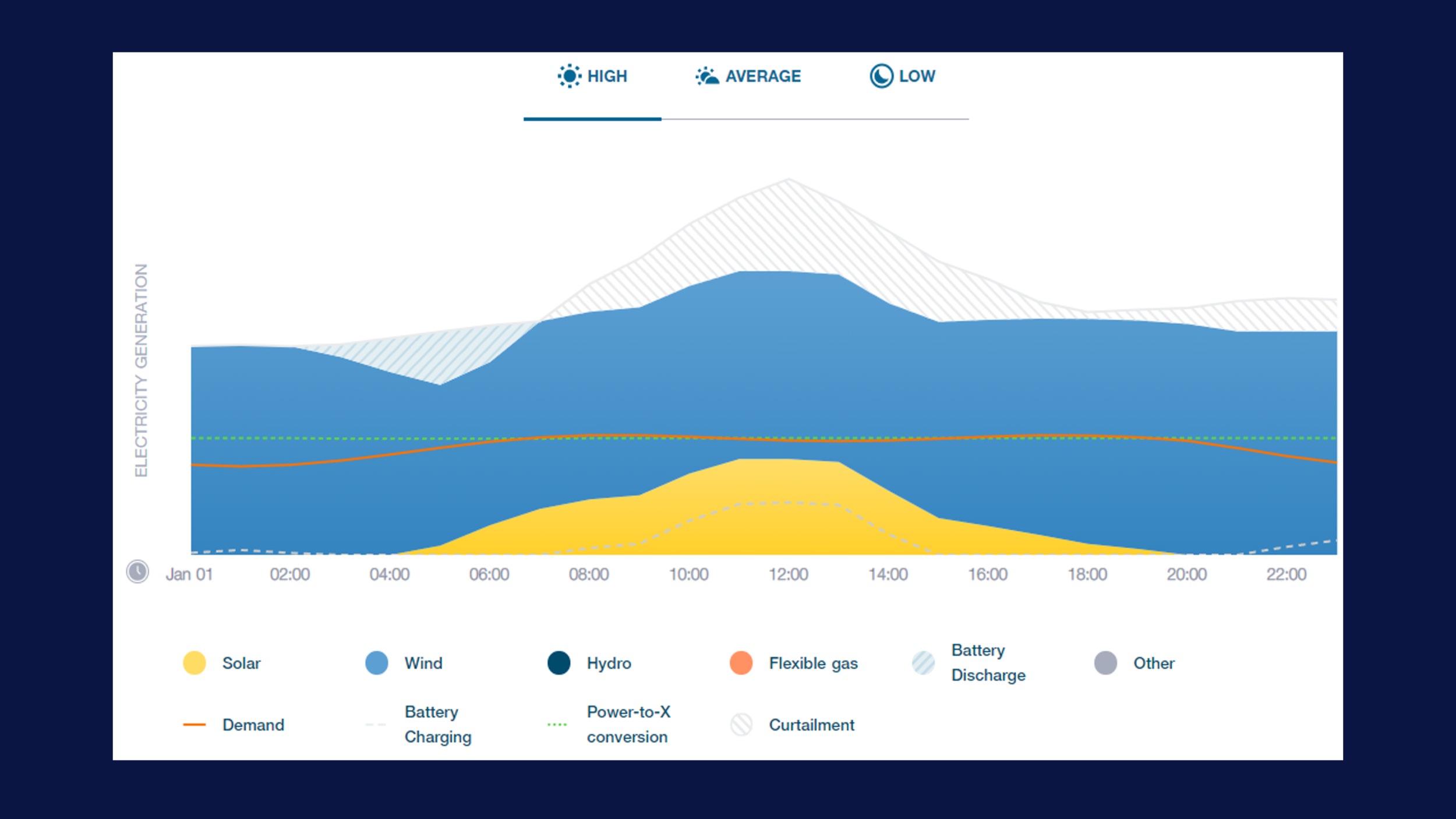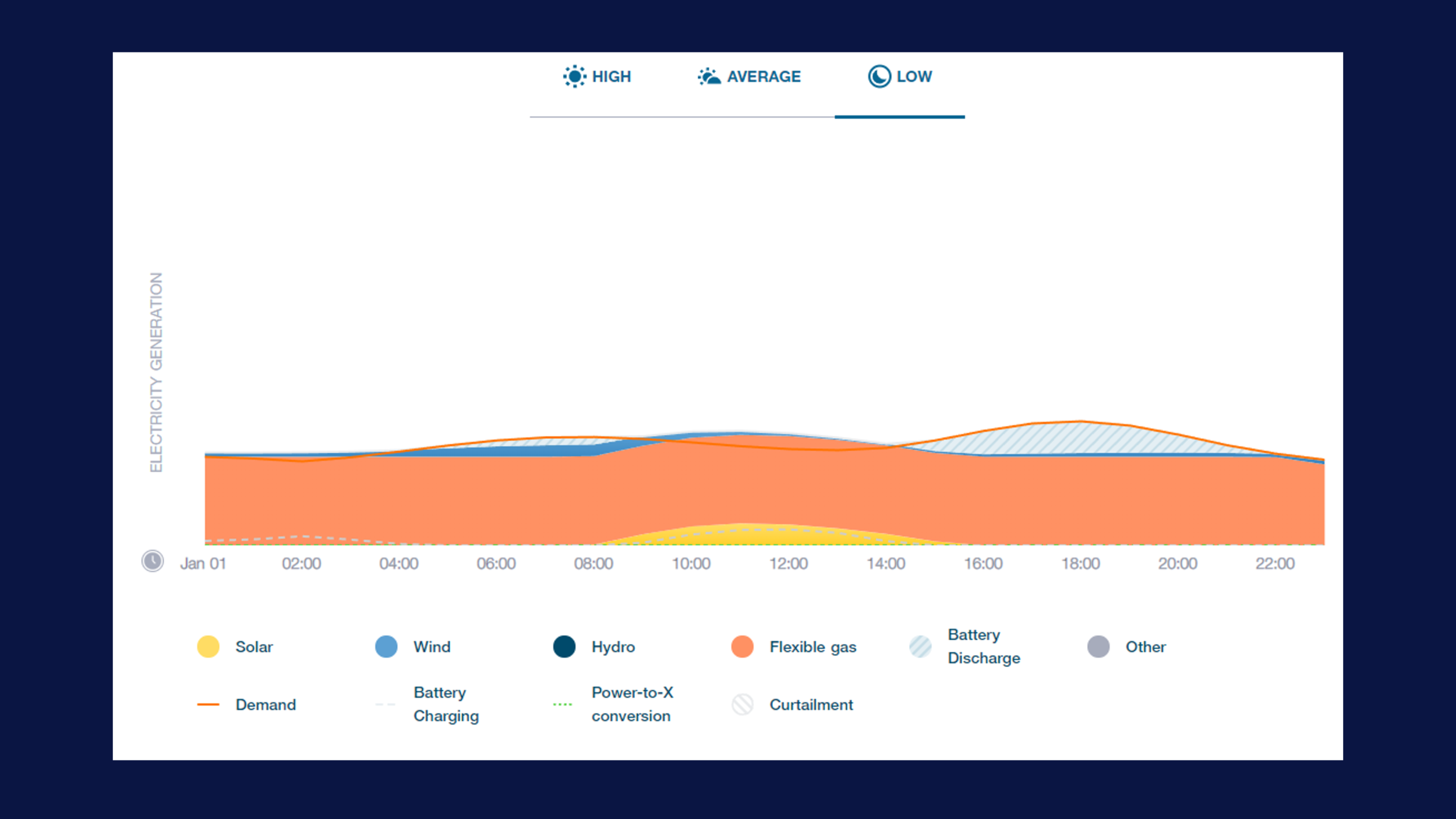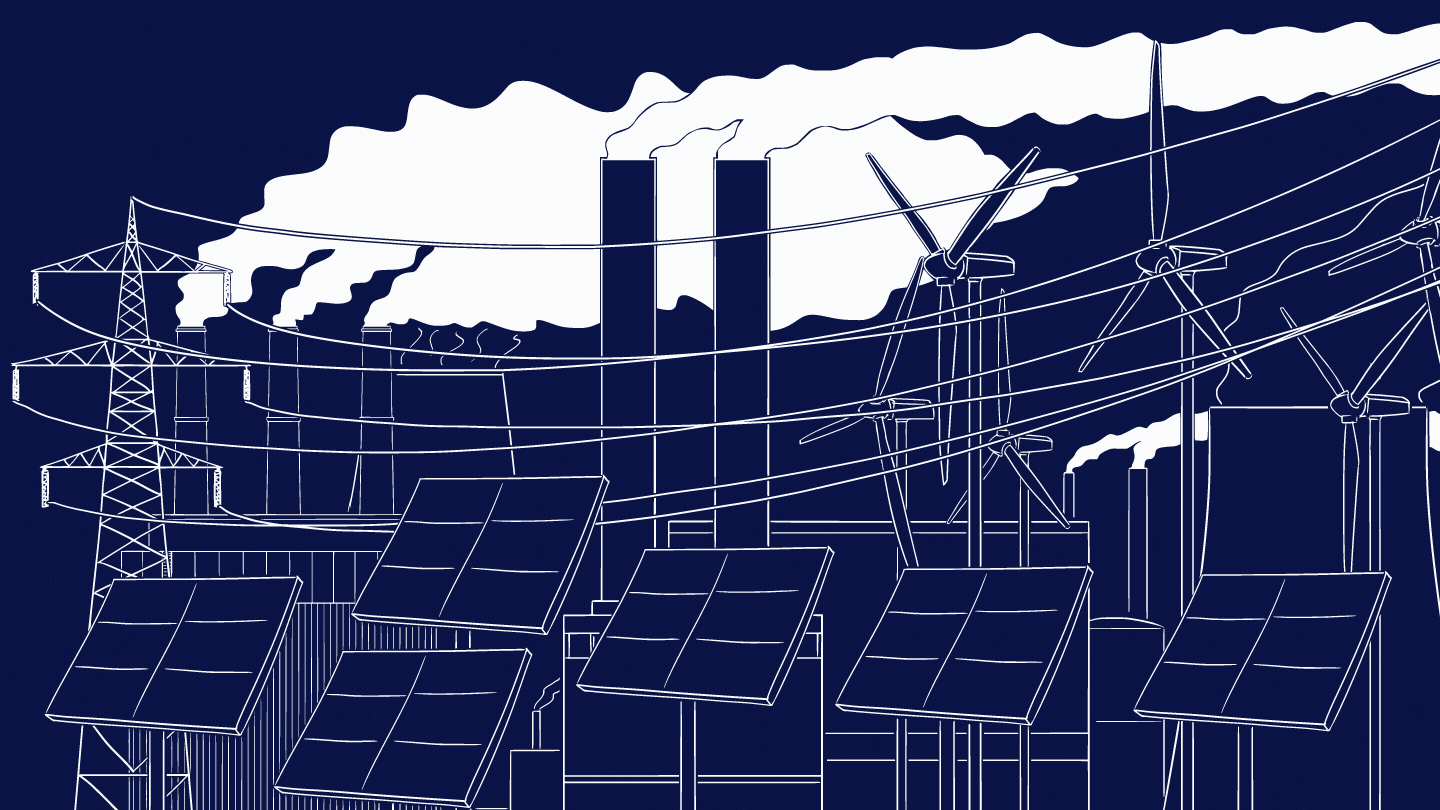Overbuilding solar and wind yields a least-cost all-renewables grid
Cheap, clean, reliable baseload power without seasonal storage
Summary - The global energy firm Wartsila modeled the least-cost renewables mix for all regions of the world, based on projected technology costs for 2030. The analysis shows that all regions require overbuilding of renewable capacity of up to four times. Contrary to popular belief, no seasonal storage is required, “only” four to ten days of multi-day storage capacity. Click here to go straight to Wartsila and find your region or click here to visit PV-magazine which serves as a basis for this blog.
It can be done
Reliable baseload with renewables only
Solar capacity reaching up to 1.6 times peak loads, and wind capacity of up to 2 times peak load, would form the basis of a least-cost all-renewables resource mix in regions across the Benelux. This mix would primarily be based upon wind and solar, backed by carbon-neutral synthetic gas during periods of poor wind and solar conditions.
Those are the results of modeling by the energy firm Wartsila. The Finland-based firm used the Plexos resource planning model, together with technology cost projections for 2030 from Bloomberg New Energy Finance, to find the least-cost resource mix that would meet demand at all hours of the year.
Astonishingly, Wartsila states that overbuilding enough renewable capacity to meet winter demand eliminates the need for seasonal storage. It also implies a substantial curtailment of solar generation during the summer, when solar generation is over ten times the amount compared to winter. An example of how a day might look like for high, average and low renewables production is shown below.
“In all regions we have to overbuild solar and wind capacity, in many cases multiple times over the peak load,” explained Wartsila Power System Analyst Antti Räty. “This is purely the most economic option. Integrating a lot of flexibility into the systems allows us to take full potential of the installed renewables and keep the excess capacity to a minimum.”
No seasonal storage required?
Contrary to popular belief, the answer is no.
Only four to ten days of multi-day storage capacity would be needed, depending on the region. For the Benelux, it would require shifting about 9% of total generation to power hydrolyzers. This would be used to produce hydrogen from water, in combination with other technologies like the Fischer-Tropsch process to produce a fuel from hydrogen. Fuel would be stored and later used to help meet electricity demand during stretches of the lowest solar and wind generation.
On top of this strategic chemical reserve, some battery capacity would be needed, mostly in order to absorb solar energy. In the U.S. Southeast for example, batteries would store up to 36% of annual generation for delivery after the sun goes down. In the Benelux however, we would only need about 13% of battery capacity according to Wartsila.
Is it possible to run on solar, wind and batteries only?
Yes, but it would require (much) more renewable capacity and batteries than the flexible system.
The “flexible” system that Wartsila proposes can utilize stored carbon-neutral synthetic fuel during periods of poor solar and wind conditions. A system running only on solar, wind and batteries needs to have an even larger amount of excess capacity to get through these periods.
Nonetheless, Wartsila claims pivoting towards 100% renewable energy is technically feasible for each region, but would also be about 100% more expensive compared to the flexible system. What exactly does this mean? It is a hint of the possibility that a system running on solar, wind and batteries alone will be cheapest by 2040.
Looking at the numbers provided by Wartsila, one could argue that the highest additional costs in a wind-solar-battery-only system for the Benelux are allocated to the batteries. Considering the price of batteries drops by about 100% each 10 years, it is simply a matter of time before solar, wind and batteries become the cheapest option. Even in our grey little, sometimes dark but always lovely part of the world.
“It is only a model”
We do not know the exact electricity price next week, let alone in ten years. We know only one thing about predictions and models - they are almost always wrong. Even though the analysis is portrayed in one of the most graphically stunning ways I have ever seen (great job Wartsila!), it remains just that. A model.
Therefore I should be careful with making too bald a statement or claims on the results, but simply interpret them as guidelines for future developments. Besides, one thing above all else stands out from this analysis.
As far as I can tell, it is the first time that a large energy firm openly publishes such renewables-biased results. More often than not, the most optimistic scenarios from agencies like the IEA, or the models of Shell and BP downplay these futures as “impossible”, “impractical” or “too expensive”. Not anymore.
More and more people are starting to realize that renewables - solar and wind - are perfectly suited to generate clean, reliable baseload power for all. I hope I will be able to help in any way I can to make this model a reality.

































